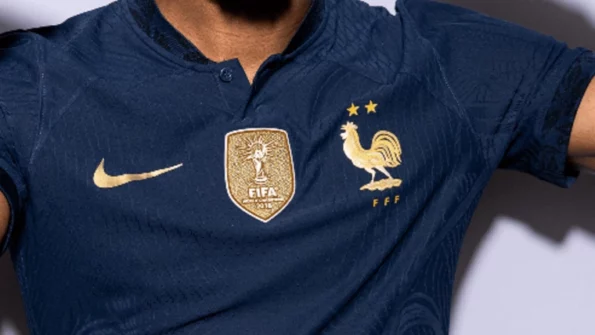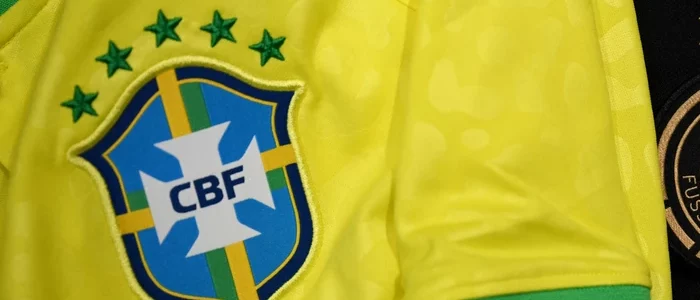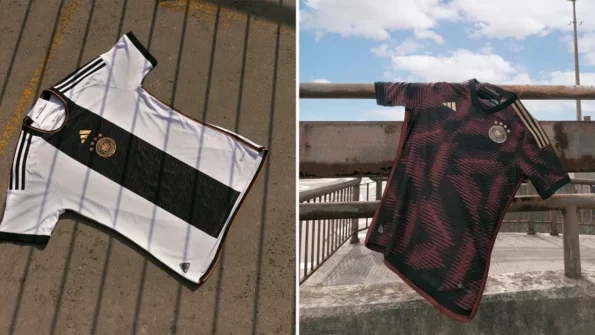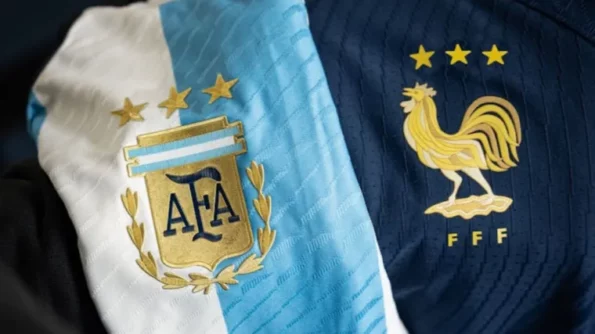Have you ever wondered what those mesmerizing stars on soccer jerseys actually represent? They’re not just there for show, my friend! These celestial symbols hold significant meaning and carry the weight of glorious victories. Join us as we unravel the mystery behind these stellar emblems in our blog post today.
Meaning behind the number of stars on a jersey
The number of stars on a soccer jersey has long been a source of fascination and curiosity for fans. These small, seemingly insignificant symbols hold deeper meaning and significance that reflect the history and achievements of a team or player.
One common rule is that a team must win either three or five international tournaments before being awarded one star. For example, Brazil proudly displays five stars on their jersey representing their record-breaking five World Cup wins. This not only serves as a source of pride but also becomes an iconic identifier for these successful teams.
In addition to representing major tournament wins, some countries also assign stars based on other significant achievements in football history. For instance, France was awarded its first star after winning the 1998 World Cup on home soil but later added two more stars to represent European Championship victories in 2000 and 2016.
On an individual level, players can also earn stars by reaching certain milestones in their career. In England’s Premier League, players are allowed to add gold patches with black outlines denoting every ten league appearances they make. Once a player reaches 100 appearances, they are then awarded a special gold patch with a Premier League logo and their squad number.
In some cases, stars may also represent personal significance to players. For example, former Manchester United player David Beckham famously wore the number seven shirt in honor of his daughter’s birth on the seventh day of the seventh month.
Overall, the number of stars on a jersey holds great symbolism and reflects the rich history and achievements of both teams and individual players. They serve as a reminder of past glories and inspire future generations to strive for greatness on the football pitch.
Different variations of stars on soccer jerseys in different leagues and countries
The presence of stars on soccer jerseys is a common sight in many leagues and countries around the world. However, what most people don’t know is that these stars have different meanings depending on the league or country they represent. In this section, we will dive into the various variations of stars found on soccer jerseys and their significance.
1. Number of Stars
One of the most obvious differences in star variations is the number of stars present on a jersey. While some teams may have one star, others may have two or even more. The number of stars usually represents the number of times a team has won their respective league title or major tournament. For example, in Germany’s Bundesliga, Bayern Munich has four stars above their club crest to signify their 30 league titles.
2. Placement
Another aspect that differentiates star variations is their placement on a jersey. In some leagues like Italy’s Serie A and France’s Ligue 1, teams place their star(s) above their badge to indicate their past successes in domestic competitions. On the other hand, some countries like Brazil and Argentina opt to place their stars below the crest as a way to honor their World Cup victories.
3. Color
The color of stars on a team’s emblem can represent their history and accomplishments, with gold stars signifying league titles and silver stars representing Copa Libertadores titles in South America. For instance, in England’s Premier League, Manchester City has 4 gold stars representing 20 top-flight titles won by its predecessor club.
4. Shapes and Designs
Stars on soccer jerseys don’t always have to be traditional five-pointed shapes. Some teams like Real Madrid and Paris Saint-Germain have customized star designs on their jerseys that are unique to their clubs. These variations add a touch of individuality and creativity to the jersey design while still honoring the team’s achievements.
5. Absence of Stars
While most teams choose to include stars on their jerseys as a way to showcase their success, some teams do not have any stars at all. This could be due to various reasons such as not having won any major titles or simply choosing not to have them on the jersey design.
The controversy surrounding star placement and its impact on jersey design
The placement of stars on soccer jerseys has always been a subject of controversy and debate among fans, players, and designers.
One of the main points of contention regarding star placement is whether it should be centered above the country’s crest or aligned with it. Some argue that having the star centered makes it stand out more and gives it a sense of importance. However, others believe that aligning it with the crest creates a more cohesive and visually pleasing look.

Furthermore, there are also disagreements about how many stars should be included on a jersey. While some argue that only one star should represent all World Cup victories regardless of how many times a team has won, others believe that every win deserves its own individual recognition in terms of star placement.
In recent years, there have been calls for FIFA to regulate star placement on jerseys and create guidelines for consistency across all teams. These regulations could include specifications for size, placement, and number of stars allowed. However, others believe that this would take away from the individuality and creativity of each team’s jersey design.
In conclusion, the controversy surrounding star placement on soccer jerseys reflects the importance placed on symbolism and tradition in sports. While some argue for uniformity and consistency, others value uniqueness and personal expression in jersey design. Ultimately, it is up to each team to decide how they want to represent their past achievements through the placement of stars on their jerseys.
Conclusion
The stars on soccer jerseys serve as a symbol of achievement and success for both individual players and their teams. They represent significant milestones and victories, reminding us of the hard work and dedication that goes into the sport. Whether it’s one star or multiple stars, these symbols hold great meaning for players and fans alike.
FAQs
1. What are the 3 stars on Juventus jersey?
The crest of Juventus F.C. proudly features 3 stars, symbolizing the impressive tally of 30 league titles they have earned. In addition, the image displays both the Scudetto and the Coccarda, which are worn by the current holders of the Serie A and Coppa Italia championships.
2. Why do Brazil have 5 stars?
The number of stars on a national team’s kit indicates their World Cup victories. As such, Brazil has a total of five stars as they have earned this recognition five times by winning football’s most prestigious tournament.
3. What does the 3 stars on Argentina jersey mean?
The three stars on the Argentina jersey represent their three World Cup wins in 1978, 1986, and 1990. They earned a star for each victory, making them one of the most successful teams in World Cup history.


